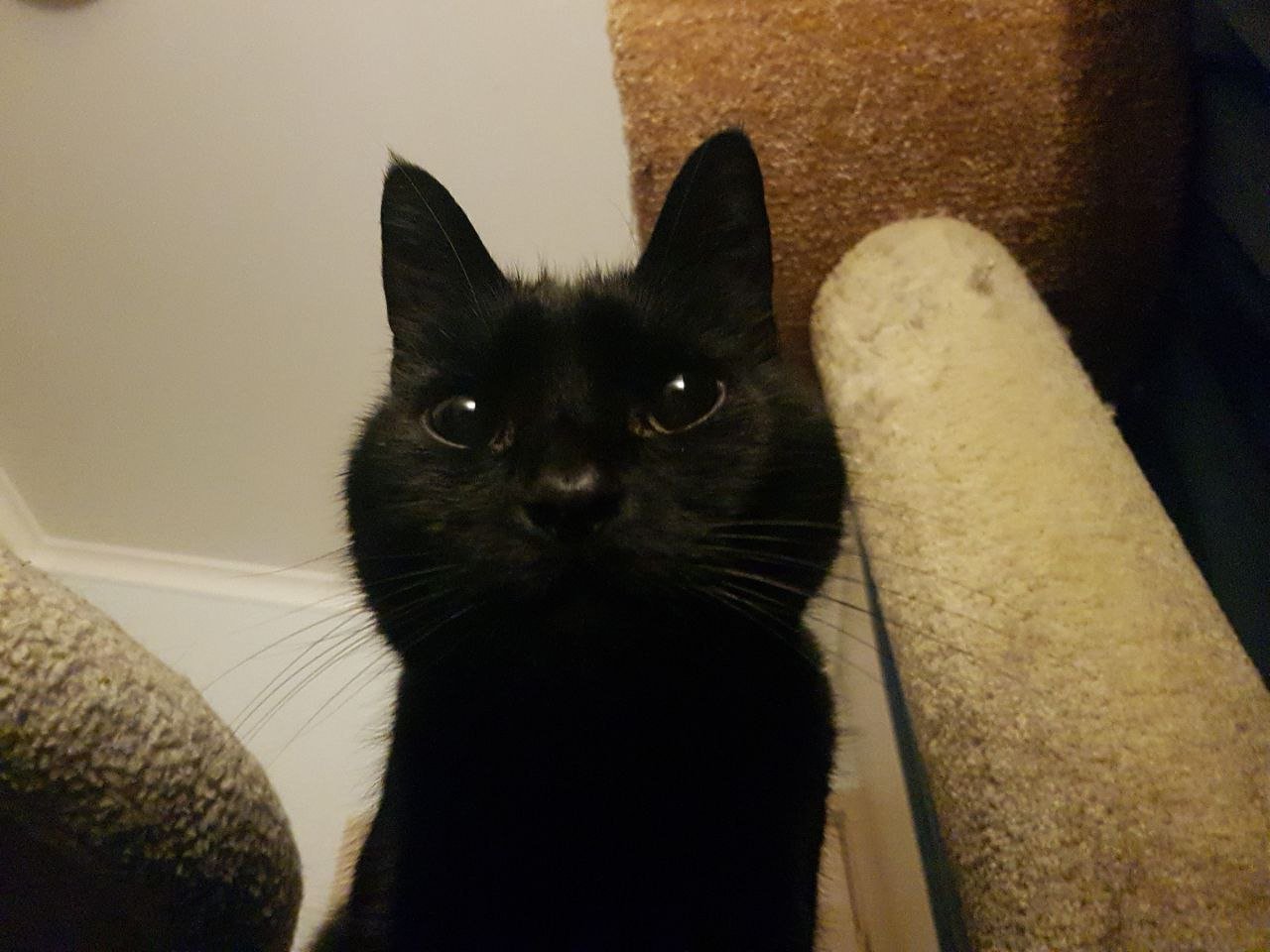Noki has been eating Scooters left over wet food and we think he’s allergic to something in it. He’s licking the hair off his butt so he has to wear the donut. We know he’s allergic to wheat but neither his dry food or Scooters wet food has any so we’re guessing he’s also allergic to the soy in the wet food. Trying to keep him from eating the leftovers and also switching it up with a different brand.
This is the exact type of situation for BARF or PMR. BARF (Biologically Appropriate Raw Food) and PMR (Prey Model Raw) basically focus on hitting the nutritional needs of animals like cats and dogs by matching what they would get from prey animals. This includes a fair bit of digest for dogs but less so for cats.
My cat is doing very well on BARF and is not showing his age at all. He used to have bad hairballs, lots of itching, and very bad fur. He is now sleek and healthy with very shiny teeth and lots of energy.

His food consists of chicken cutlet (for skin, bone, and meat), chicken or lamb liver, chicken or lamb heart (for taurine), sheep brain, usually lamb kidney but sometimes beef, and then some selection of rotating meat which includes beef, pork, lamb, chicken, salmon, and prawns (sometimes called shrimp). It is about 7.5g for each of the heart, liver, kidney, and brain, then the bone is varied to change stool consistency (more bone makes harder stool) so he has an easy time there, then the meat is rotated to keep deficiencies in any specific meat at bay.
It takes about half an hour once a fortnight to make his food and he is fed every morning. He sometimes carries his meat somewhere else to eat it so we have to clean carpet or surfaces, but honestly, he is just way too cute for us to try and do something about it.
Anyway, maybe switching would help, the process of switching takes a while and requires building jaw strength so it is a little slow going at first, but the improvement to health is pretty great and it isn’t that much effort. Oh, and his poop smells way less, and there is less of it. He has much smaller and smoother poops, nothing runny, nothing girthy, and the cat litter is able to contain the smell more effectively than previously.
Indeed we noticed the litter box smells way less, the poop but pee as well. We went on BARF because he kept vomiting on dry food and now he only barfs hair balls. He sometimes still had trouble pooping, we now put a few drops of olive oil a day into his diet…works well. For treats we give him cooked and chopped chicken livers or shredded chicken breast, half warm. He loves cooked chicken and stays close when preparing.
Our little monster is the same about cooked chicken, if you have it you have obviously made a mistake, that is his food and while he is a gentle god he can also be a jealous god.
As for the fat, we have recently tried using fat from pork roasts, the fat cap is thick and soft so we can take a little of that and add it to his containers. I tried more refined fats, he will definitely eat butter, but he ends up missing the stop point and having loose stools if we use a refined fat.
Now this is an Elizabethan collar I can appreciate, very dapper.
(Get well soon!)
Try barfmenu…raw meat with some supplements like Taurine. We don’t give our cat processed dry food or anything with filler like wheat or vegetables. It is a bit more expensive though. My cat only likes the chicken version. He almost 18 now, blood values good like a younger cat.
Ask your vet before you take any advice from the internet though
donut ask
Because you lick yourself at night.
If only I could
Also concur with feeding raw. Our cats never have problems, never need to get their teeth done, have the most luscious and soft coats, their poop doesn’t stink, they’re not at risk of kidney disease, etc., etc. We’re lucky that we have a business nearby that specialises in raw feeding and makes premixes of whole wild and domestic animals meats, including organs (e.g. possum, wallaby, hare, rabbit, chicken, turkey, salmon, etc.) and small bones for cats. Even if you don’t have that, you can make up your own. Just avoid large animals such as venison, pork, and especially beef. Beef is highly allergenic to cats (and dogs). Mimic a small wild cats natural diet as closely as possible - small animals, fish and birds with organs and bones. Feed a variety of meats over the course of a week so there aren’t any nutritional deficiencies. Get hold of some green tripe if possible (not all cats will eat it but it’s worth giving if they do).





